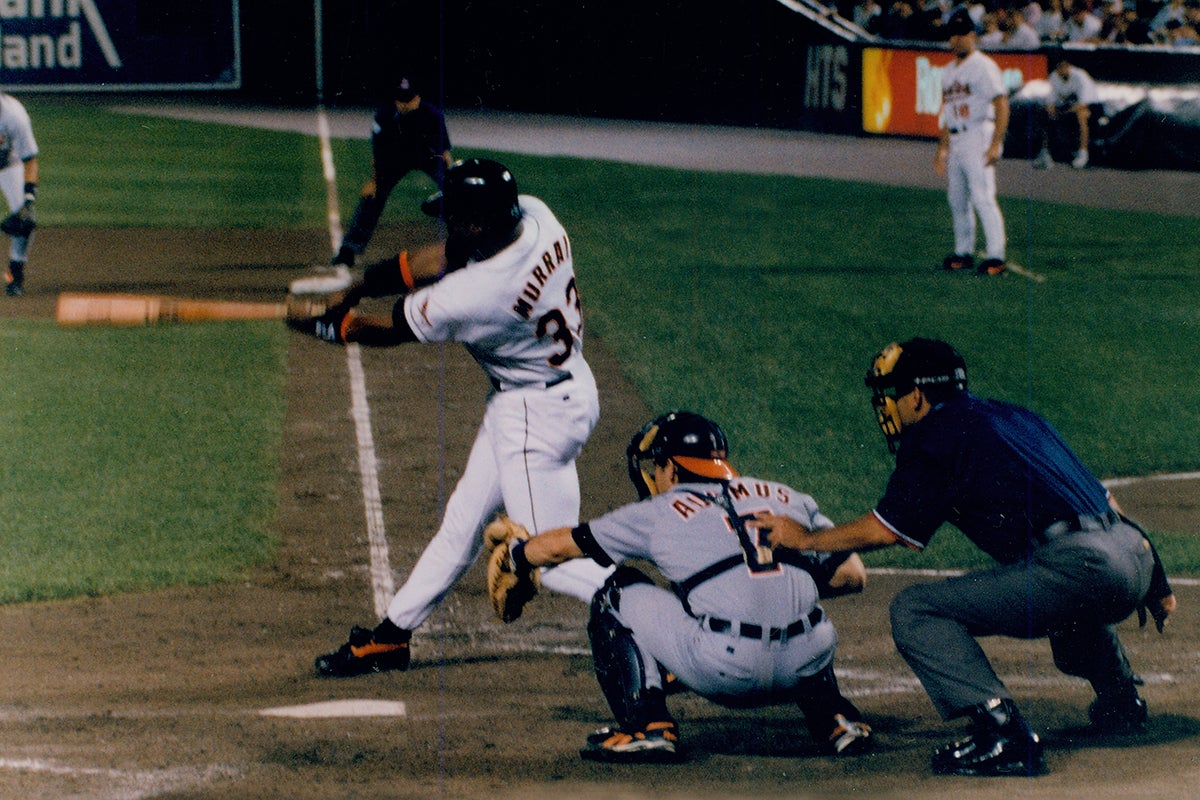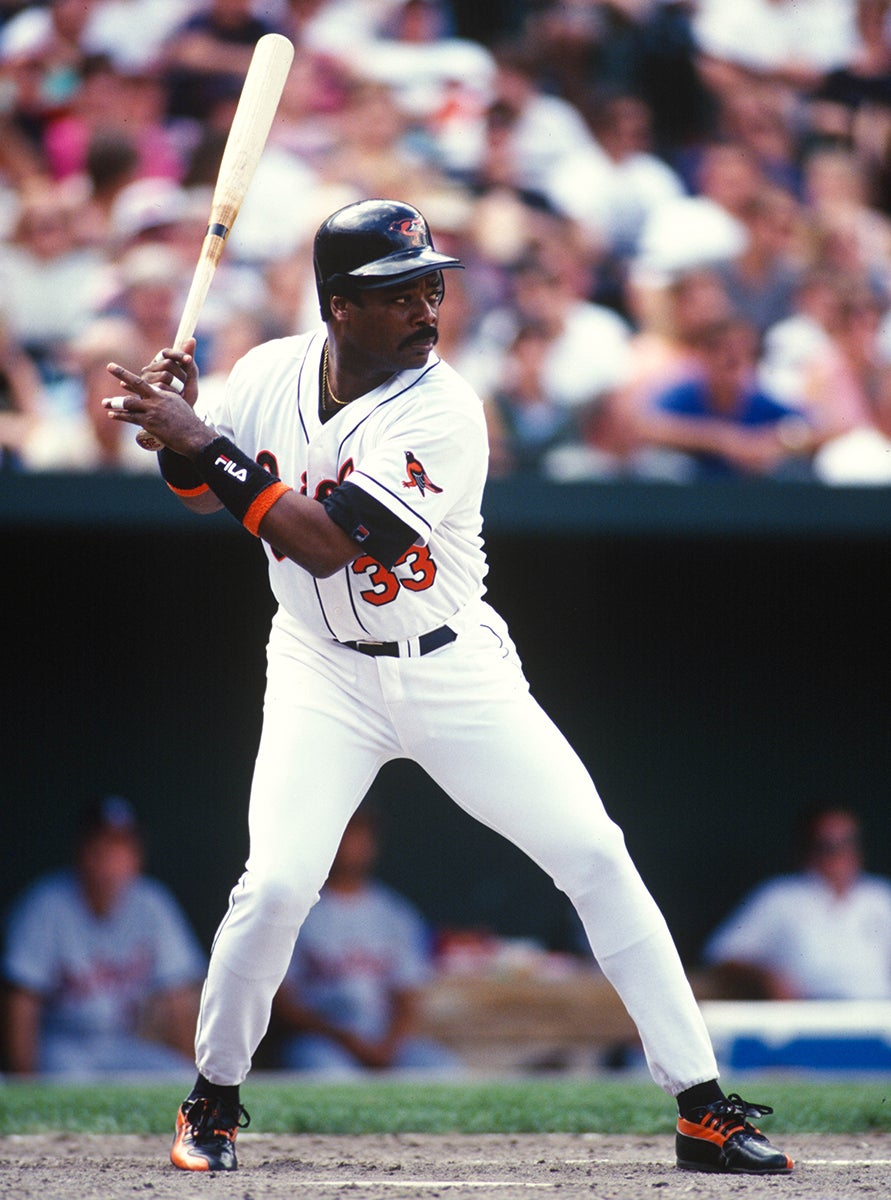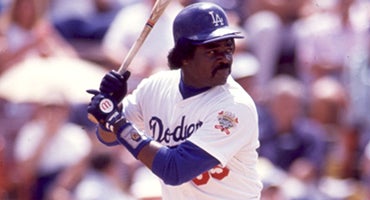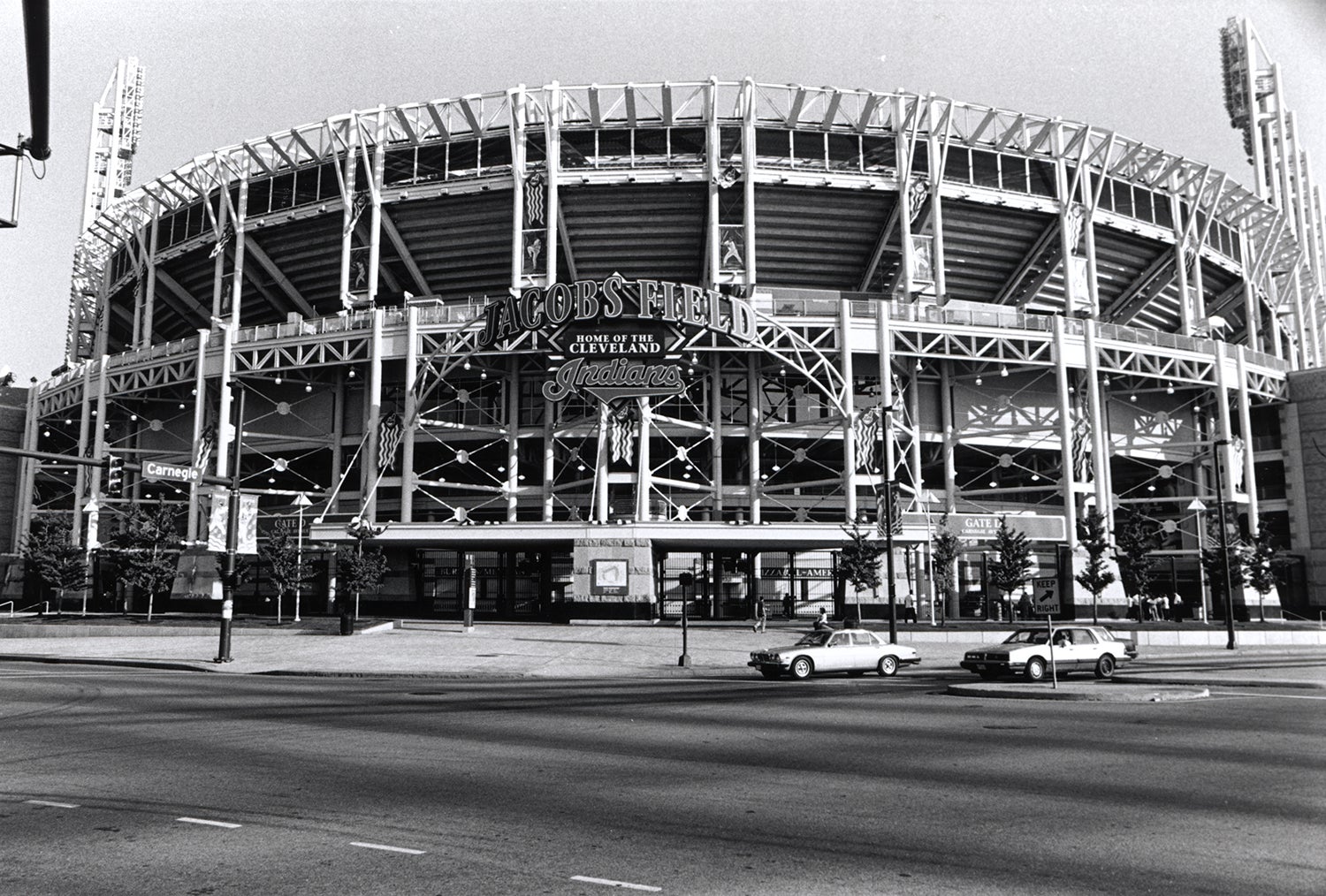- Home
- Our Stories
- Murray’s 500th blast puts him in legendary company
Murray’s 500th blast puts him in legendary company
When Eddie Murray joined the 500-home run club on Sept. 6, 1996, only 14 players had reached the mark before he did.
But the home run also put Murray into an even more exclusive group: Those with 3,000 hits and 500 home runs.
When Murray’s seventh-inning blast off Detroit’s Felipe Lira cleared the right field wall at Oriole Park at Camden Yards, Murray became the third member of the 3,000-hit/500-home run club. Among all big leaguers to that date, only Hank Aaron and Willie Mays had reached both milestones.
Since Murray joined that list, four other names have been added: Rafael Palmeiro, Álex Rodríguez, Albert Pujols and Miguel Cabrera.
“It’s a neighborhood you don’t know if you belong in yet,” Murray told the Baltimore Sun. “The third guy to do that? It’s still hard to see yourself mentioned in that same company. Those are guys that everybody knows.”

The home run came on the one-year anniversary of Cal Ripken Jr. breaking Lou Gehrig’s consecutive games played streak at Camden Yards and elicited a similar celebration. Murray received an ovation that lasted nearly nine minutes and he provided the crowd with multiple curtain calls.
“It was nice to see everybody get fired up about it,” Murray said. “Hopefully now, a lot of things will die down so I can get back to hitting the way I’m capable of hitting.”
The home run was Murray’s 21st of the season and left him with a .265 batting average. Then in his 20th big league season, Murray had been one of the most consistent players of his era – reaching the 20-home run mark 16 times while totaling 12 seasons with at least 90 RBI.
When he retired following the 1997 campaign, Murray had a .287 batting average, 504 home runs and 1,917 RBI – a total that ranked No. 8 all-time and still ranks 11th overall.

The milestone home run ball was caught by Dan Jones of Towson, Md., one of about 25,000 fans still in attendance at Camden Yards on a night where rain delayed the start of the game by more than two hours. Jones then sold the ball to Michael Lasky, the owner of the popular phone service Psychic Friends Network, for a reported $500,000 that would be paid to Jones in annuity installments over 20 years.
At the time, the $500,000 figure was reported by the Associated Press to be the most money ever paid for a piece of sports memorabilia – a record that was eclipsed just days later when a Honus Wagner T-206 card sold for $600,000.
Lasky then held a phone-in contest, asking callers to choose whether the ball would go to the Babe Ruth Museum in Baltimore or the National Baseball Hall of Fame and Museum in Cooperstown. Callers – who paid a fee that went to charity for each call – chose the Babe Ruth Museum.
“I valued (the ball) at that number. I have no idea why,” Lasky told the AP. “I’m not a collector, just a baseball fanatic. I just thought that is what it was worth.”
Murray was elected to the Hall of Fame in 2003.
Craig Muder is the director of communications for the National Baseball Hall of Fame and Museum





